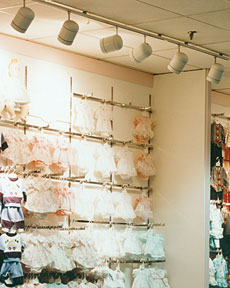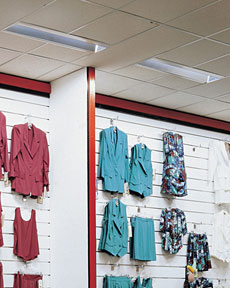The Future Looks Bright: Energy-Efficient Lighting Technologies
Demand and Daylight
Whatever the case may be, control systems are expected to continue proliferating, driven by the LEED guidelines and energy codes. For example, California's Title 24 mandates strict guidelines for dual switching, the use of occupancy and vacancy sensors, mandatory daylighting harvesting and, for some applications, demand response (DR) using so-called "smart grid" systems.
For DR, the end-user voluntarily reduces load or helps generate power to return to the gird, delivering significant savings and shaving peak loads for utility-wide benefits. Research shows that users can tolerate quick, steep reductions in lighting on a temporary basis, relates DiLouie, making it a good candidate for DR integration.
Regional utility rates and the availability of incentives determine whether DR is a viable option. In California, where peak demand rates can reach as high as $0.55 per kWh, DR is seen as the key to a reliable power grid. In the West North and Central regions, however, where the Energy Information Administration reports much lower rates, it really doesn't make sense.
Where it does, a facility's lighting system can be set up to initiate a load-reduction protocol at peak demand times. "This programming sequence, for example, would dim all lighting fixtures to an unnoticeable 80 percent of their maximum output over a period of five minutes, leading to significant savings," says Lorenzen. Such schemes require a capital investment in hardware and software, so many end-users will only participate if it is mandated by energy codes or induced by powerful utility incentives - or if they plan to use ballasts and controls already, notes DiLouie.
"That said, DR and smart-grid solutions remain very regional in nature, so are unlikely to have a large impact on the overall specification market," Willmorth concludes.
Noteworthy for lighting specifiers in all markets, however, are several up-and-coming integral daylighting/lighting control products. DiLouie is particularly interested in dual-loop technology, now under development at the California Lighting Technology Center and also marketed by a few manufacturers. Essentially, the technology solves the shortcomings of open-loop and closed-loop daylight harvesting strategies by rolling both technologies into a single, self-commissioning unit.
"Another valuable development is called dynamic façades, utilizing motorized window treatments controlled by intelligent systems that calculate sun's position, to reduce HVAC costs," says Susan Hakkarainen, chief creative officer of Ivalo Lighting wellthought out way, such as reducing light levels without sacrificing visual comfort."
Meanwhile, Mor sees much potential for BAS-linked daylighting and electrical lighting, although he and other lighting designers see the industry as being a few years away from a seamless BASintegrated lighting system. A few forward-looking projects have also used weather monitors and tracking mirrors, but these have also been rare. "Those seem more suitable for warehouses and big-box applications where vertical footcandles are important," suggests John Hall, a senior associate with EYP Architecture & Engineering, Albany, NY. "Also, this type of technology in an office environment may increase cooling requirements and reduce the ability for occupants to select appropriate lighting levels." Instead, Rachel Petro, IESNA, A IALD, LC, LEED AP, lighting designer, associate, RNL Design, Denver, relies upon the data for penetrating light levels and shading from daylight studies to inform the daylight harvesting system design. As such, the specification is based upon "the architecture, site location and orientation, and the system ultimately utilizes a combination of interior and exterior photosensors to determine the real-time light levels at the site."
| Merchandising with a Miserly Touch | ||||||||||||||||||||||||||||||||
Last year, the apparel stores owned by JCPenney - many featuring energy-miser lighting systems - helped their Plano, Texas-based owner become the first retailer to earn an ENERGY STAR Award for Sustained Excellence. This year, they repeated the win, too. To earn the honors, JCPenney drafted a five-year energy strategy and cut their energy use by 5 percent over a 12-month period. About 10 new stores were built to meet ENERGY STAR guidelines, and another 20 existing stores were upgraded to that status. In terms of lighting, retailers are focused on visibility, color rendering and intangible benefits such as "sparkle." To achieve those qualities while still reducing energy loads was a challenge. Working with Wojno Construction and the lighting manufacturer, JCPenney was able to enhance merchandise displays while cutting power loads and maintenance costs at several stores.
For some merchandise displays, JCPenney replaced their incandescent track fixtures with state-of-the-art wall-wash fixtures, using two 40-watt biax fluorescent lamps. The light sources are shielded from normal viewing angles, yet the rectangular fixture with aluminum reflectors is shallow (3.5 inches) to fit in a small ceiling space. This resulted in superior lighting on the merchandise: an even, unscalloped wash of bright light with excellent color rendering. Just as important for JCPenney, the fixtures garnered 72 percent savings in energy (see Fixture Comparison Chart below) and need to be relamped every 4 years.
|
||||||||||||||||||||||||||||||||











